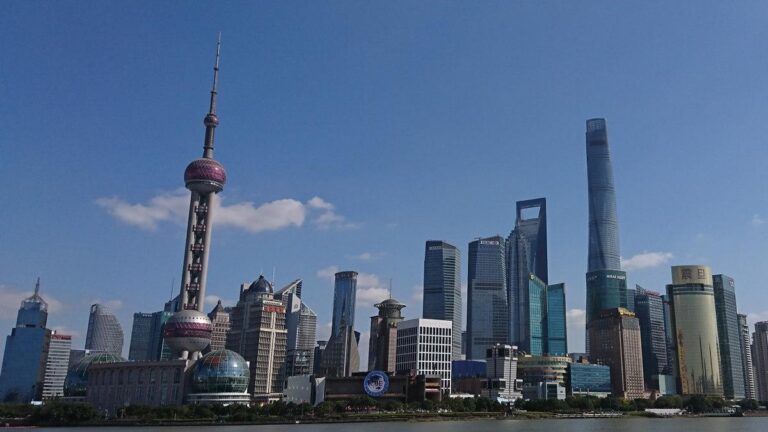China has notably excluded electric vehicles (EVs) from its latest five-year economic plan, signaling a cautious shift as the industry confronts mounting challenges related to oversupply. The decision marks a departure from previous strategies that heavily promoted the rapid expansion of EV production and adoption. As the world’s largest EV market grapples with an excess inventory of vehicles and slowing demand, policymakers appear to be recalibrating their approach, raising questions about the future trajectory of China’s electric mobility ambitions.
China’s Five-Year Plan Omits Electric Vehicles Amid Industry Oversupply Concerns
In a surprising move, China’s latest five-year plan has notably excluded electric vehicles (EVs) from its key development priorities. This departure signals concern within the government over the rapidly escalating oversupply in the EV sector, which has led to increased inventory costs and pressured margins for manufacturers. Industry insiders suggest that policymakers are shifting focus towards stabilizing the market and promoting sustainable growth rather than aggressively pushing expansion at this stage.
Market dynamics indicate a saturation point has been reached, with production outpacing consumer demand substantially. Below is a quick overview of the current state of the EV sector’s supply-demand metrics:
| Metric | 2023 | 2024 Forecast |
|---|---|---|
| EV Production (million units) | 6.5 | 7.2 |
| Domestic EV Sales (million units) | 5.8 | 6.0 |
| Inventory Overhang (months) | 3.5 | 4.0 |
Key implications:
- Manufacturers may face tighter regulations and reduced subsidies moving forward.
- Investors could recalibrate growth expectations amid market corrections.
- A strategic pivot towards alternative green technologies such as hydrogen fuel cells is possible.
Impact of Policy Shift on Domestic EV Manufacturers and Global Market Dynamics
The recent policy shift, which notably excludes electric vehicles (EVs) from China’s latest five-year plan, has sent ripples through the domestic manufacturing sector. For years, government incentives catalyzed a rapid expansion of EV production, spurring an influx of new models and fierce competition among local players. However, with the withdrawal of direct policy support, many manufacturers now face the challenge of navigating a market oversupplied with vehicles and thinning profit margins. This realignment forces companies to streamline operations, prioritize innovation, and explore cost-efficiency to remain viable amid tightening domestic demand.
The implications extend beyond China’s borders, influencing global market dynamics significantly. As the world’s largest EV market slows its aggressive growth, international manufacturers eye shifts in supply chains and consumer trends. Key impacts include:
- Adjustment of export strategies by Chinese EV makers aiming to offload excess production overseas.
- Reconfiguration of global supply chains as key components face demand fluctuations.
- Heightened competition among leading global brands vying to capture emerging markets with less policy dependence.
| Impact Area | Domestic EV Manufacturers | Global Market |
|---|---|---|
| Production | Consolidation & Focus on Profitability | Shift in Export Destinations |
| Innovation | Investment in Battery & Tech R&D | Adoption of Competitive EV Technologies |
| Market Dynamics | Reduced Reliance on Government Incentives | Increased Market Competition & Diversification |
Strategic Recommendations for EV Companies Navigating China’s Changing Regulatory Landscape
In light of the latest policy shift excluding electric vehicles (EVs) from China’s five-year plan, companies must pivot their strategies to remain competitive. Prioritizing innovation in energy efficiency and battery technology will be vital as government support becomes less direct. Firms should explore partnerships with domestic suppliers to optimize supply chains and reduce costs amid tightening regulations. Additionally, diversifying markets beyond China could hedge against domestic uncertainties while leveraging the company’s technology advances.
Key strategic steps include:
- Investing in next-generation battery solutions focused on cost reduction and sustainability
- Forging alliances with local manufacturers to strengthen production resilience
- Expanding sales channels in emerging international EV markets to offset domestic slowdowns
- Enhancing after-sales services and vehicle software updates to differentiate offerings beyond hardware
| Strategy | Focus Area | Expected Outcome |
|---|---|---|
| Battery Innovation | Cost & Sustainability | Lower production expenses |
| Supplier Partnerships | Local Integration | Supply chain stability |
| Market Diversification | International Expansion | Reduced domestic reliance |
| Service Enhancements | Customer Experience | Brand loyalty growth |
Insights and Conclusions
As China’s five-year plan omits support for electric vehicles amid mounting concerns over industry oversupply, manufacturers and policymakers alike face heightened uncertainty. The exclusion signals a potential shift in government priorities, underscoring the challenges of balancing rapid EV market expansion with sustainable growth. Stakeholders will be watching closely to see how the industry adapts to this new regulatory landscape in the coming years.




